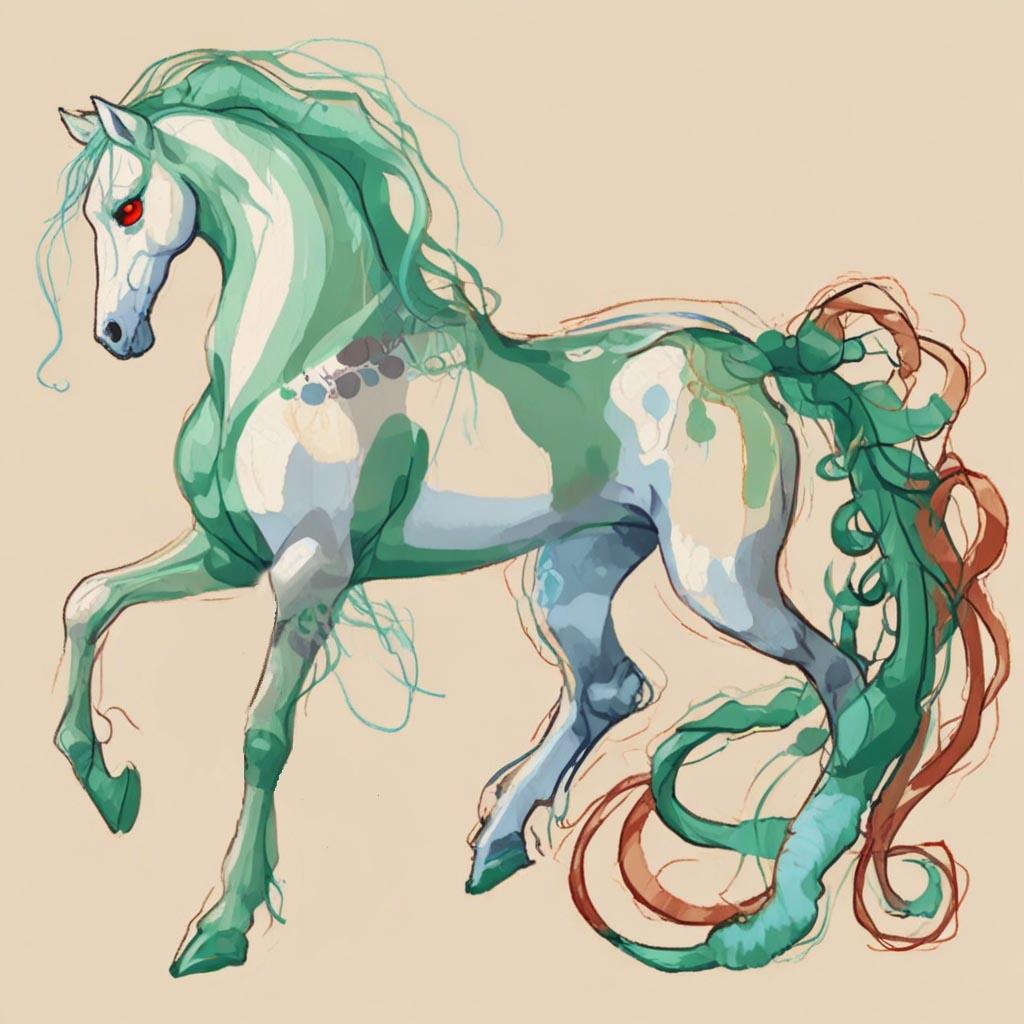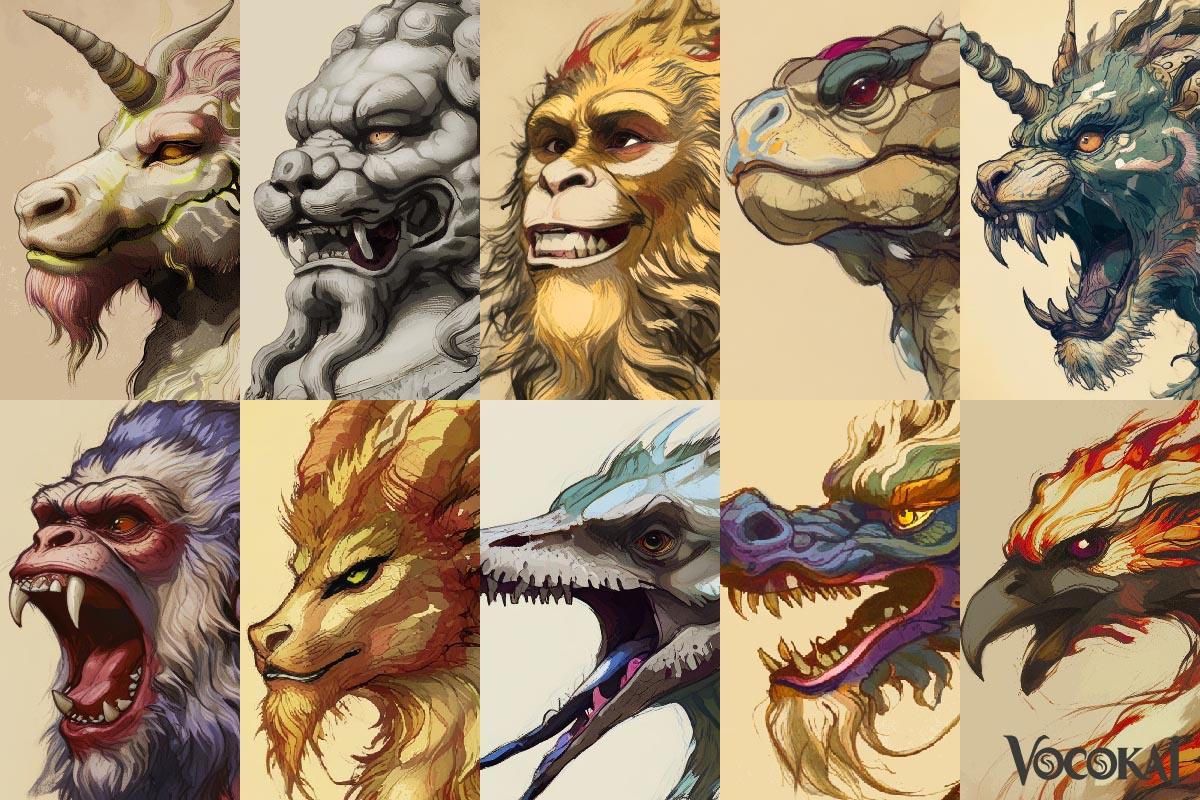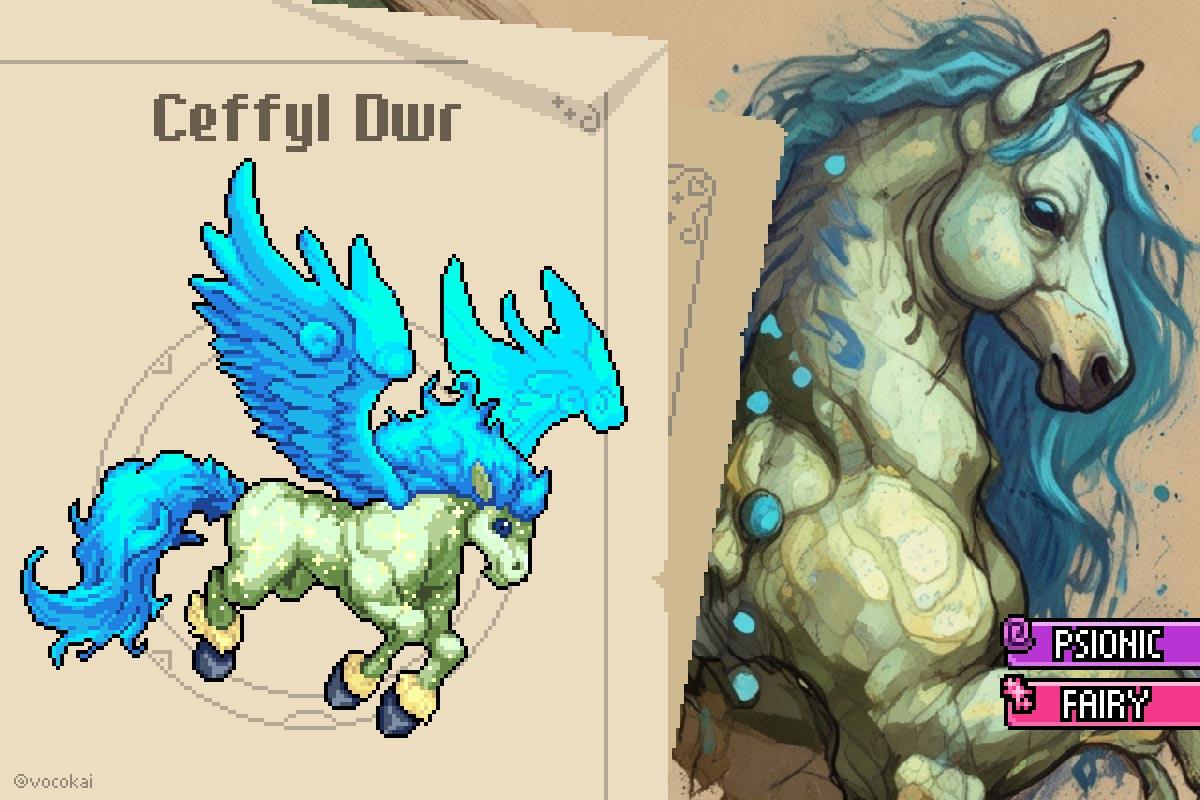Introduction: Kelpie
The Kelpie, a captivating and fearsome creature of Scottish folklore, is known as a shape-shifting water spirit that often takes the form of a horse. Renowned for its beauty and allure, the Kelpie lures unsuspecting victims to their doom, dragging them into the depths of lochs and rivers. This enigmatic water horse embodies the untamed and dangerous aspects of nature, serving as both a cautionary tale and a symbol of the unpredictable forces of the natural world.
The Origin and Cultural Variations
The origins of the Kelpie are deeply rooted in Scottish mythology, with tales dating back to ancient times. As a creature of the water, it is often associated with the Highlands’ numerous lochs and rivers. The name “Kelpie” is believed to derive from the Scottish Gaelic word “cailpeach,” meaning “heifer” or “young cow,” emphasizing its connection to rural and aquatic life.

Historical Significance: Kelpie
The Kelpie occupies a significant place in Scottish folklore, symbolizing the dangers and mysteries associated with water and nature. Historically, this shape-shifting water spirit has served as a cautionary tale, warning locals—especially children—of the perils of wandering near lochs and rivers. Its tales date back to ancient times, and the Kelpie is often invoked in stories to explain the tragic disappearances of those who fell victim to its allure.
Cultural Variations: Kelpie
The Kelpie, while primarily a figure of Scottish folklore, has cultural variations that reflect similar themes across Celtic and broader European traditions. In Wales, for instance, the Ceffyl Dwr is a water horse that shares characteristics with the Kelpie, known for luring victims to watery graves. Much like the Kelpie, the Ceffyl Dwr embodies the danger of the water and serves as a warning against the temptations of beauty.


Modern Interpretations: Kelpie
In contemporary culture, the Kelpie has transcended its origins in Scottish folklore to become a captivating figure in various artistic and literary interpretations. While the traditional tales warn of the dangers of water, modern adaptations often explore the complexities of the Kelpie’s character, presenting it as a more nuanced symbol of nature’s beauty and unpredictability.
Shaping Childhood Fear Across Cultures: Kelpie
The Kelpie, like many mythical creatures associated with water, has played a significant role in shaping childhood fears and behaviors, particularly in Scottish culture. As a water spirit known for its deceptive beauty and lethal nature, the Kelpie serves as a cautionary tale for children, warning them about the dangers of the water and the need to respect nature’s power.


Appearance
The appearance of the Kelpie is striking and serves to reinforce its dual nature as both beautiful and deadly. Traditionally depicted as a horse, this shape-shifting creature often exhibits the following characteristics:
- Leafy Face
- Woodland Camouflage
- Vines and Branches
- Ancient Expression
- Leafy Face:In its primary form, the Kelpie appears as a majestic horse, often black or dark in color, with a sleek and powerful physique. This equine appearance serves to attract victims, drawing them in with its beauty and grace.
- Woodland Camouflage:The Kelpie’s mane is typically depicted as flowing and wet, giving it an ethereal quality. The water-logged strands reflect its aquatic nature and serve as a reminder of its home in the lochs and rivers.
- Vines and Branches: One of the most chilling features of the Kelpie is its glowing eyes, which are said to shine with an otherworldly light. This unsettling trait hints at its supernatural nature and its deceptive intentions.
- Ancient Expression:The Kelpie is renowned for its ability to transform into various forms, including that of a human. When appearing as a person, the Kelpie often takes on the guise of a handsome stranger, luring individuals to their fate. This ability to shift shapes underscores the creature’s cunning and dangerous nature.

Behavior
The Kelpie exhibits a range of behaviors that reinforce its reputation as a fearsome predator of the waterways. Key aspects of its behavior include:
Guardianship of the Waters: In some interpretations, the Kelpie also serves as a guardian of the lochs and rivers, ensuring that the natural order is maintained and that those who disrespect the water are punished.
Luring Victims: The Kelpie is known for its cunning ability to attract unsuspecting individuals to the water’s edge, often through its beautiful appearance or the guise of a handsome man.
Deceptive Charm: This creature uses charm and allure to disarm its victims, making them believe they are safe before revealing its true nature.
Predatory Nature: Once a victim is close enough, the Kelpie reveals its malevolent intent, dragging them into the depths of the water, where it consumes them.
The Influence of the Kelpie
The Kelpie’s influence extends beyond mere folklore, shaping cultural expressions and artistic interpretations throughout history. This iconic figure resonates deeply within Scottish culture, often serving as a metaphor for the unpredictable and untamed nature of the landscape. As a cautionary symbol, the Kelpie reminds us of the respect and reverence that the natural world commands, ensuring its place in stories and teachings for generations to come.

The Kelpie is a legendary water spirit in Scottish folklore, known for its shape-shifting abilities and fearsome nature. Often appearing as a beautiful horse, the Kelpie lures unsuspecting victims to their watery demise in rivers and lochs across Scotland. Its name is derived from the Gaelic word “cailpeach,” meaning “heifer,” emphasizing its connection to pastoral landscapes.

















